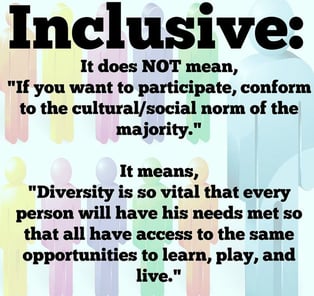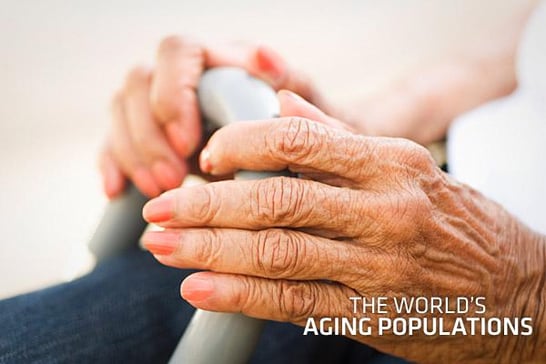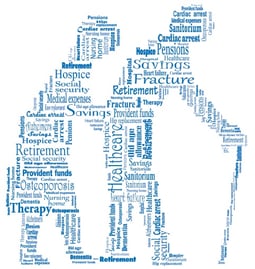 America’s top companies are hiring the best, most qualified candidates, by widening their recruitment efforts and increasingly seeking diverse talent. Diverse workplaces include employees from different races, ethnicities, gender, education, religions, sexual orientations, socioeconomic backgrounds, geographic locations, and other varying conditions.
America’s top companies are hiring the best, most qualified candidates, by widening their recruitment efforts and increasingly seeking diverse talent. Diverse workplaces include employees from different races, ethnicities, gender, education, religions, sexual orientations, socioeconomic backgrounds, geographic locations, and other varying conditions.
One reason Diversity recruitment is skyrocketing is because of the changing demographics of the United States. According to the latest census, the ethnic makeup of America is changing more rapidly than anticipated. Many studies reveal that businesses who have established Diversity and Inclusion initiatives have a competitive edge, particularly in today’s global market. Following are 6 reasons explaining why businesses should not wait for their CEO to bring up Diversity Recruitment.
1. More Creativity
A Diverse workforce promotes creativity and innovation. When employees of varying qualifications, upbringings, education, and experiences are brought together, they are more capable of coming up with creative ideas that are “out of the box,” and solve problems in novel ways. According to Roy Y.J. Chua, a Harvard Business School professor, “The more your network includes individuals from different cultural backgrounds, the more you will be creatively stimulated by different ideas and perspectives."
2. Increased Productivity
Increased productivity is the major reason organizations are choosing to implement Diversity into their workplaces. Businesses that have incorporated Diversity into their hiring structure have discovered there is increased productivity among all employees, particularly from those groups that have been underrepresented, and underemployed, in the past. These include many groups including seniors, women, physically handicapped, people of color, and individuals with different sexual orientation. Increased productivity allows businesses to not only increase profits, nationally and globally, but to edge out their less diversified competition.
3. Broadening of Language Skills
A huge advantage of workplace Diversity is the broadening of language skills, enabling communication with people from other cultures. It is almost impossible to build relationships with others if we cannot speak their language or understand the meaning behind their words. Over the next 4 decades, racial minority groups including Black, American Indian, Hispanic, and Native Hawaiian and Pacific Islanders will come to outnumber non-Hispanics. With the health care industry in particular, it is essential to have a diverse workforce that accurately represents the population of the U.S., if patients are to receive quality care that promotes satisfaction and healthy outcomes. All businesses that have plans to compete at a global level will experience benefits by increasing language Diversity in the workplace.
4. Greater Agility
Business agility requires an organization to be adaptable, flexible, and respond quickly to alterations in both the internal and external environment. A Diverse and Inclusive workforce is more capable of bringing together a variety of perspectives that can lead to decisions to bring about the most advantageous results. Leadership coach, Joseph Santana, states that a Diverse workforce can help to avoid “the blind spots that may exist in any single individual or cultural group lens.”
5. Increased Loyalty from Employees, Customers, and Communities
The cultural fabric of an organization is enhanced with a Diverse workforce. Diversification has been found to inspire employees and build loyalty with increasing segments of Diverse populations around the world. Organizations that have made efforts to increase and improve Diversity in their workplace have found that growth in employee loyalty has long-term internal and external benefits. One definite advantage is that consumers tend to support organizations that are perceived as Diverse.
6. Improved Employee Recruitment and Retention
Every individual of the organization needs to be part of, and “buy into” the Diversity and Inclusion policy. The message has to be clear to employees and customers. The commitment to Diversity and Equality has to be inviolate.
- Recruitment
Diversity recruitment substantially broadens the candidate pool. This larger labor force will include those applicants with high-level aptitudes, specific skill-sets, and unique life experiences. Healthcare related occupations are among the fastest growing industries, and Diversity recruitment is helping to attract the skilled workers necessary to fill positions. Businesses are much more likely to hire the right people when they select candidates from the broadest, and most Diverse, applicant collection possible.
- Retention
Organizations that clearly value Diversity and Inclusion enhance employee contentment and stability, which has a direct bearing on employee retention. For employees who wish to succeed and grow in the organization, there is trust in the company that advancements are awarded because of merit, and not because of race, gender, or background. The Diversity message is not only communicated to the staff, but also to customers, and the surrounding communities.
Do your organization a favor and don't wait for your CEO to bring up Diversity recruitment. The research is in. Businesses that fail to harness the power of Diversity are destined to decline.
If your CEO doesn't see how important Diversity and Inclusion is, have them fill out our Diversity checklist to show them where they stand on the scale. 
Have questions about recruiting or diversity? We can help! Just ask this Nurse Leader your toughest questions. Click below.




 Exclusion on the other hand separates, it inhibits, limits, shuts down, sometimes oppresses, even suffocates. To be excluded is one of the top five fears that we as humans have. It instills fear by its very nature and can create tremendous anxiety and can lead to conflict. Exclusion is not just harmful to the person, it’s harmful to relationships, families, profit and non-profit organizations and societies. We lose out on who that person is and what that person who is different from us (be it their perspective, their idea, their culture, their age) has to offer. We lose out on what we can learn and on what they/we together can contribute, build, inspire and live.
Exclusion on the other hand separates, it inhibits, limits, shuts down, sometimes oppresses, even suffocates. To be excluded is one of the top five fears that we as humans have. It instills fear by its very nature and can create tremendous anxiety and can lead to conflict. Exclusion is not just harmful to the person, it’s harmful to relationships, families, profit and non-profit organizations and societies. We lose out on who that person is and what that person who is different from us (be it their perspective, their idea, their culture, their age) has to offer. We lose out on what we can learn and on what they/we together can contribute, build, inspire and live. Strong management is necessary for all work environments, especially those that involve quick decision-making and high-pressure situations. Nursing is a career that, undoubtedly, fits into this category. Quality Nurse Management is vital when creating successful Nursing teams. Nurse Managers have an effect on how their employees relate to each other and their patients. Regardless of the hospital unit the manager works in, he or she must lead with a firm yet compassionate hand, revealing what they expect from the team. What is the importance of strong Nurse Management?
Strong management is necessary for all work environments, especially those that involve quick decision-making and high-pressure situations. Nursing is a career that, undoubtedly, fits into this category. Quality Nurse Management is vital when creating successful Nursing teams. Nurse Managers have an effect on how their employees relate to each other and their patients. Regardless of the hospital unit the manager works in, he or she must lead with a firm yet compassionate hand, revealing what they expect from the team. What is the importance of strong Nurse Management? The profession of Nursing is engaged in a consistent conversation about the state of Diversity in Nursing. The way these figures are tallied are by comparing the percentage of individuals of various ethnic or cultural backgrounds in the general population to the relative group percentages in the field of Nursing. Many professional Nursing publications have been observant that Diversity in the Nursing field has improved, but there is still much additional room for continued improvement.
The profession of Nursing is engaged in a consistent conversation about the state of Diversity in Nursing. The way these figures are tallied are by comparing the percentage of individuals of various ethnic or cultural backgrounds in the general population to the relative group percentages in the field of Nursing. Many professional Nursing publications have been observant that Diversity in the Nursing field has improved, but there is still much additional room for continued improvement.




 Last year the Green Valley Fire District began what is best described as a "mobile urgent care" and next month they will be sharing it in Washington D.C.
Last year the Green Valley Fire District began what is best described as a "mobile urgent care" and next month they will be sharing it in Washington D.C. There are undoubtedly a number of myths about the Nursing profession. Being a Nurse is as rewarding spiritually as it is financially, but unfortunately, many qualified individuals overlook the Nurse career path due to any number of possible misconceptions. After debunking some of these Nursing myths, it becomes easier to decide whether a career in Nursing makes sense for anyone considering it.
There are undoubtedly a number of myths about the Nursing profession. Being a Nurse is as rewarding spiritually as it is financially, but unfortunately, many qualified individuals overlook the Nurse career path due to any number of possible misconceptions. After debunking some of these Nursing myths, it becomes easier to decide whether a career in Nursing makes sense for anyone considering it. America is getting old. Not the nation itself, but the average age of the citizens that call America home. According to the US government's census and population board, by 2030 the Baby Boomer generation will be over the age of 65 and as such, the shift in demographics will cause many changes to the USA's way of life and tending to the aged. One such area where these changes will see direct effects is in the palliative care and nursing home care for aging and senior citizens.
America is getting old. Not the nation itself, but the average age of the citizens that call America home. According to the US government's census and population board, by 2030 the Baby Boomer generation will be over the age of 65 and as such, the shift in demographics will cause many changes to the USA's way of life and tending to the aged. One such area where these changes will see direct effects is in the palliative care and nursing home care for aging and senior citizens.